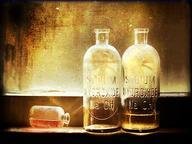Quiz Answer Key and Fun Facts
1. Sugar is a common and naturally-occurring ingredient in a number of different foods. Which of these sugars is not naturally-formed?
2. Discovered in the mid-1960s, what artificial sweetener was discovered when the scientist who created it licked some off his hand after spilling it in the lab?
3. Sucralose is six hundred times sweeter than regular sugar. It's commonly sold under what commercial name?
4. One of the strongest unnatural sweeteners available and approved by food and drug commissions throughout the world, Advantame is approximately how much sweeter than natural sugar?
5. Overly sweet and almost metallic-tasting in high quantities, what unnatural sweetener is branded as Sweet'n Low in North America?
6. While banned in some countries, sodium cyclamate is often used as a sweetener, but in what way?
7. Often used instead of sugar when creating high-fructose corn syrup, which of these is a sweetener (developed by NutraSweet)?
8. Alitame, created by Pfizer, was created in the 1980s and had no aftertaste. Created as a response to an earlier sweetener, it is which of these?
9. Neohesperidin dihydrochalcone may be a sweetener, but you probably won't taste it very much. It has an aftertaste akin to which of these other flavours?
10. Despite most sugar replacements being unnatural in origin, one of these options is actually natural. Which is it?
Source: Author
kyleisalive
This quiz was reviewed by FunTrivia editor
rossian before going online.
Any errors found in FunTrivia content are routinely corrected through our feedback system.

